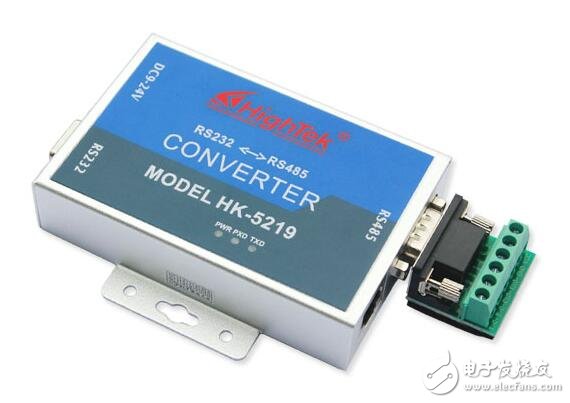Another problem that needs to be solved in the RS485 (RS485 converter) networking process is the terminal load resistance problem. The whole network can work well without the terminal load resistance when the device has a short distance (ie, generally less than 300 meters). There is no need to terminate the resistor), but performance will decrease as the distance and load increase.
Generally, the terminal matching adopts the terminating resistance method. RS-485 should be connected to the terminating resistor at the beginning and the end of the bus cable. The terminating resistor takes 120Ω in the RS-485 network. A resistor equivalent to the characteristic impedance of a cable, since most twisted pair cables have a characteristic impedance of approximately 100 to 120 Ω. This matching method is simple and effective, but has a disadvantage. The matching resistor consumes a large amount of power, and is not suitable for a system with strict power consumption limitation.
Another way to compare power savings is RC matching. Using a capacitor C to block the DC component can save most of the power. However, the value of capacitor C is a difficult point, and a compromise between power consumption and matching quality is required. There is also a diode matching method. Although this scheme does not achieve true "matching", it can quickly attenuate the reflected signal by the clamping action of the diode to achieve the purpose of improving the signal quality, and the energy saving effect is remarkable.

The terminating resistor is designed to eliminate signal reflections in the communication cable.
During communication, there are two types of signals that cause signal reflection: impedance discontinuity and impedance mismatch. The impedance is not continuous, and the signal suddenly encounters a small or no cable impedance at the end of the transmission line, and the signal will cause reflection at this place. The principle of such signal reflection is similar to the reflection of light from one medium into another.
To eliminate this reflection, it is necessary to connect a terminating resistor of the same magnitude as the characteristic impedance of the cable at the end of the cable to make the impedance of the cable continuous. Since the transmission of the signal on the cable is bidirectional, a similarly sized termination resistor can be bridged across the other end of the communication cable.
Another cause of signal reflection is the impedance mismatch between the data transceiver and the transmission cable. The reflection caused by this reason is mainly manifested in the fact that when the communication line is in the idle mode, the entire network data is confusing. To reduce the effect of reflected signals on communication lines, noise suppression and biasing resistors are often used. In practical applications, for relatively small reflected signals, for the sake of simplicity and convenience, a method of applying a bias resistor is often employed.
vape disposable,vape device for vaping,vape device for smoking,smok vape pen plus,smok vape pen plus
Shenzhen Aierbaita Technology Co., Ltd. , https://www.aierbaitavape.com